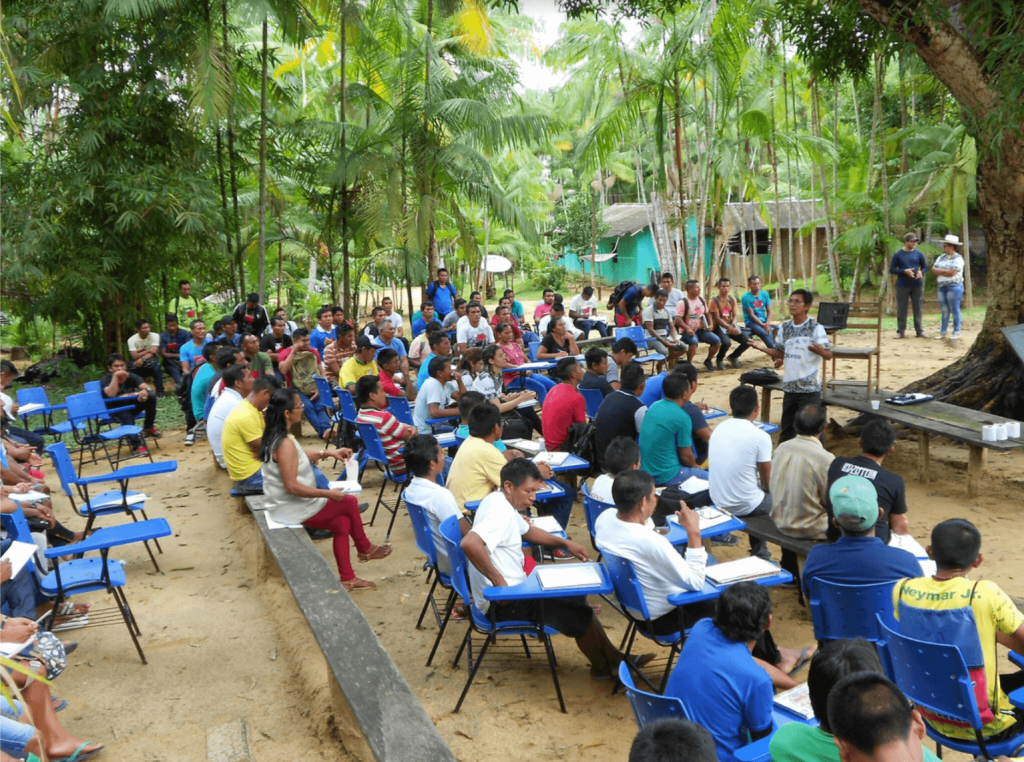ADDRESSING COVID-19

Training of Health Agents in Alto Rio Solimões. Photo: Sesai/Ministry of Health
The Challenge of Vaccination
Unbalanced vaccination coverage among the various territories and circulation of false news expose institutional difficulties
During the pandemic of COVID-19, between 2020 and 2021, the Amazonian indigenous communities, in general, played a leading role in adopting safety measures to prevent contagion, as well as sharing their traditional knowledge among themselves. During the first year of the pandemic, medicinal plants were widely used and fundamental for the treatment of symptoms. In addition, many communities developed control and prevention protocols in their communities, and adopted measures to restrict circulation. Even so, the population also resorted to conventional medicine when they had access to it.
With regard to vaccines, some countries had high vaccination coverage, as is the case of Brazil, while others, such as Bolivia or Suriname, did not reach good coverage of the vaccinated population. According to reports from indigenous leaders, the biggest problem for the low coverage was not the availability of immunizers, but rather the lack of fluid and effective communication and the circulation of false news that discourage the population to get vaccinated.
The COVID-19 pandemic exposed institutional deficiencies to a greater or lesser degree in all countries, not only in relation to communication with indigenous communities, but also because institutionalized and accurate data for decision-making at the community and municipal level was lacking. For example, it was not possible to obtain accurate information from many of the indigenous communities in the study areas, which hampered a better view of COVID-19 development at the local level.
Another aggravating factor relates to the precarious living conditions of many indigenous communities in the region. Due to insufficient basic drinking water supply and sewage services, prophylactic measures for coping with COVID-19, such as environmental cleanliness and hand washing, were hampered. In organizational and political terms, many of the decisions taken were centralized, and also without considering the heterogeneity of the population’s educational levels and access to health services. Due to the great social inequality that exists, the messages and decisions taken at the central level did not generate effective responses.
It is important to highlight that the indigenous populations studied are more vulnerable to COVID-19 for a few reasons: (a) low availability of care in Intensive Care Units (ICUs), and the consequent long distance required to be traveled by the patient in cases that demand highly complex treatment; (b) high population mobility; (c) presence of activities with high environmental impact and many of them illegal, such as mining; (d) lack of access to adequate infrastructure and precarious living conditions of some groups; (e) high cultural diversity which implies the non-use of the official language of the country as the mother tongue and (f) populations more susceptible to mortality from infectious diseases, especially the peoples in isolation and initial contact.
MAPA INTERATIVO
Observe no mapa interativo do Módulo Povos Indígenas, onde se localizam os territórios indígenas na região amazônica e observe as regiões fronteiriças estudadas pelos consultores da OTCA:
